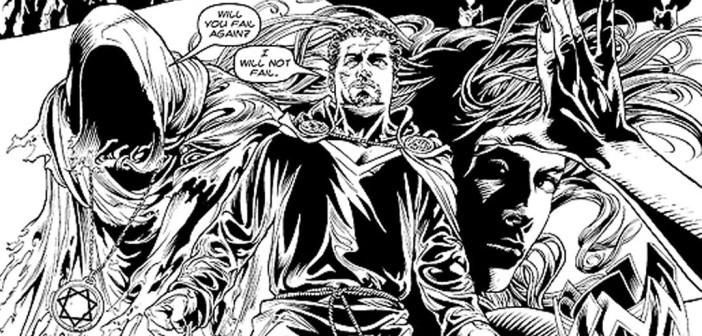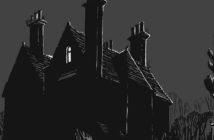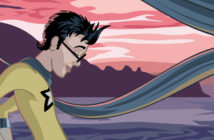I recently had a conversation with a friend about the current state of comic books as an artistic medium. He raised several valid points, chief among them the stagnant titles continually being churned out by the major comics industry. He asked me: “Why is it that we’re still talking about Watchmen? Has nothing that powerful, that groundbreaking been created in over 20 years to raise the bar?” It’s a fair point. Most of Marvel and DC’s bestselling titles come off more as marketing campaigns for their films and video games rather than genuine stories intended to rise and fall on their own merits.
But that’s the curse of the American industry, isn’t it? We’re married to the superhero archetype, resulting in comic books being more of a genre than a medium. In that regard, the validity of my friend’s complaint is half correct. But comic books as a medium cannot be dismissed based on the cynical whims of two bloated corporate establishments. I’m reminded of that every time I read a genuinely good book that teeters and totters on the brink of independent obscurity. Such is the case with Richard Carbonneau and Robin Simon NG’s The Marvel, to be released by Cellar Door Publishing.
Though, The Marvel isn’t a good book. It’s an excellent book. Not since Alan Moore and J.H. Williams’ Promethea have I read a comic that revels in occult lore with the ultimate desire to teach it’s readers about the occult instead of falling back onto tired clichés of pagan voodoo and dark secrets. And yes, that includes several of Grant Morrison’s writings (cherished by many, but largely unloved by me).
Carbonneau and Simon achieve this by succinctly chronicling the life of John “Jack” Marvel Whiteside Parsons, a historically obscure man whose scientific insight would be pivotal in the future of NASA. In fact, many say that without Jack Parsons, NASA might have not even come into being. But the scientist was also a sorcerer, as Parsons was steeped in all things occult, so much so that he even referred to the legendary Aleister Crowley as “father.” Crowley, in turn, eventually viewed Parsons as the leader of the American sect of his Ordo Templi Orientis (O.T.O.) organization. Rumors circulated that one day Parsons would even succeed Crowley as its leader. Unfortunately, that day would never arrive due to Parson’s untimely death.
Jack Parsons was born in 1914 to a wealthy but dysfunctional family. His father abandoned him in his teens, and he developed an uncomfortably close relationship with his mother (future writings by Parsons, supplied by Carbonneau, reveal his awareness of an “Oedipus Complex”). Early in his life, Parsons made a lifelong friend in Edward Forman, who would work with him on rocket experiments. These very experiments would lead the two to the gates of Cal Tech—not as students, but rather as wayward researchers mooching off of graduate students looking for unique dissertations. Here Parsons invents solid rocket fuel, the boon needed to herald humankind’s space age.
This is what makes Parsons such a fascinating figure. By day, he was a brilliant scientist who didn’t even hold a college degree. By night, he invoked elementals and cast spells during Gnostic masses. Parsons always claimed that at the age of 13 he successfully invoked the Devil. I’m not sure what happened afterwards; my gut tells me that if Lucifer goes to the trouble of making an appearance, he’s not going to simply vanish on cue. This experience led Parsons to the Agape Lodge in California. From there, he became more and more steeped in the occult, leading to his magical magnum opus of invoking the Babalon Working to bring about the end of the world. And for added measure, he had several wives, girlfriends, and lovers along the way.
Oh, L. Ron Hubbard pops up, too. Yes, Scientology’s L. Ron Hubbard.
I’ve cut a lot of corners in my brief biography of Jack Parsons. Fortunately, writer Carbonneau has not. He tells us everything we need to know about Parsons as a man, scientist, and occultist. He’s done a copious amount of research in compiling this life story, something not easily done when considering the limited resources out there.
What’s so remarkable about the end result of The Marvel is the intimacy of the Parsons portrait. Carbonneau writes in his foreword the following: “[Parsons’] was an outsider, and a dreamer, and had the heart of a poet. He was different, and as he approached adolescence he had only a few friends who really understood him. Does any of this sound familiar to you? Maybe it’s a touch personal? It certainly is for me.” That personal touch is evident from beginning to end. Carbonneau respects Parsons, and if he lived during his era, I’m sure he would have wanted to be friends with him.
The artwork of Simon couldn’t be more complimentary to this story. Because this is a work of historical fiction and not a pure biography, both Carbonneau and Simon communicate a lot of the material their working with through visual realism. When we see Parsons engaged in the Babalon Working, we witness the goddess of destruction herself. When Parsons casts a spell, Simon provides it with special effects. The overall look of The Marvel reminds me of a cross between Ande Parks and Chris Samnee’s stark black-and-white imagery in Capote in Kansas and the astounding visual imagination of the aforementioned Promethea. Simon always goes the extra distance, too, as with his replications of certain “real-life” occurrences. For example, he recreates a famous group photo from 1936 that shows Parsons and his four coworkers resting after one of their experiments. He also reproduces Marjorie Cameron’s “Dark Angel” painting with slick accuracy.
After reading The Marvel, I’m not really sure what Carbonneau and Simon personally believe about Jack Parsons and his magical workings. Do they think them literally true, or more symbolic? It’s an interesting question, but not one that affects the overall impact of their book. Simply put, The Marvel is an intelligent, insightful, refreshing, and beautifully illustrated volume that should not be missed, and one that has renewed my faith in comic books as a medium. I only hope that Carbonneau and Simon will work on a future book together, perhaps a biography of Aleister Crowley? I think they’re the right guys to do it, because after finishing this book, I’m starting to think that they’re sorcerers themselves.
This comic book review originally appeared on Broken Frontier.





1 Comment
Greetings,
Do what thou wilt shall be the whole of the Law.
Thanks for your article; I enjoyed it. However, just a couple points of clarification: there are no “spells” cast, elemantals invoked, nor any other magickal experiments conducted during a “Gnostic Mass”. The Gnostic Mass is a strictly regulated ceremony under the aegis of Ordo Templi Orientis. Also just for clarification, the “Babalon Working” is an experiment or ceremony in which “Babalon” is evoked. Think of it like this; one does not evoke the “ringing of the doorbell”, one performs the ringing of the doorbell to evoke the occupant(s).
Love is the law, love under will.
At any rate, thanks again; now I’ve got to go looking for this Marvel!